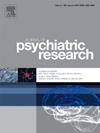Genetic architecture of tic disorders: A systematic review of 125 observational studies
IF 3.7
2区 医学
Q1 PSYCHIATRY
引用次数: 0
Abstract
Background
To summarize and evaluate recent advances in the genetics of tic disorders (TDs) and to understand the possible pathogenic mechanisms behind this disorder.
Methods
PubMed, EMBASE, the Cochrane Library, and four Chinese databases were searched from inception to September 2022. Observational original studies that explored genetic or chromosomal variations associated with the etiology, diagnosis, treatment, or prognosis of TDs were included. The Strengthening the Reporting of Genetic Association Studies (STREGA) statement was used to evaluate the quality of the included studies.
Results
125 studies were finally included with 119 of moderate quality and 6 of low quality. A total of 32,439 cases with different types of TDs and 81,923 controls were included. The results involved 98 genes, 16 chromosomes, and multiple gene sets. Genome-wide studies were also included. The top three systems were the dopamine system, nervous system development, and the serotonin system. 96 loci in 56 genes and 20 regions in 14 chromosomes were reported to be relevant to TDs, with SLC6A4 (serotonin system) and NTN4 genes being relatively strongly correlated with the occurrence of TS, and ACP1 (serotonin system) and DBH (dopamine system) being relatively strongly correlated with TS comorbid with attention deficit hyperactivity disorder (ADHD).
Conclusion
Polygenic loci were found to play a key role in the occurrence and development of TDs. However, the applicability of the findings may be limited due to the small sample size, single-center design and the limited study quality of included studies. Future research with more comprehensive study designs and improved reporting transparency is needed to confirm the findings.
求助全文
约1分钟内获得全文
求助全文
来源期刊

Journal of psychiatric research
医学-精神病学
CiteScore
7.30
自引率
2.10%
发文量
622
审稿时长
130 days
期刊介绍:
Founded in 1961 to report on the latest work in psychiatry and cognate disciplines, the Journal of Psychiatric Research is dedicated to innovative and timely studies of four important areas of research:
(1) clinical studies of all disciplines relating to psychiatric illness, as well as normal human behaviour, including biochemical, physiological, genetic, environmental, social, psychological and epidemiological factors;
(2) basic studies pertaining to psychiatry in such fields as neuropsychopharmacology, neuroendocrinology, electrophysiology, genetics, experimental psychology and epidemiology;
(3) the growing application of clinical laboratory techniques in psychiatry, including imagery and spectroscopy of the brain, molecular biology and computer sciences;
 求助内容:
求助内容: 应助结果提醒方式:
应助结果提醒方式:


